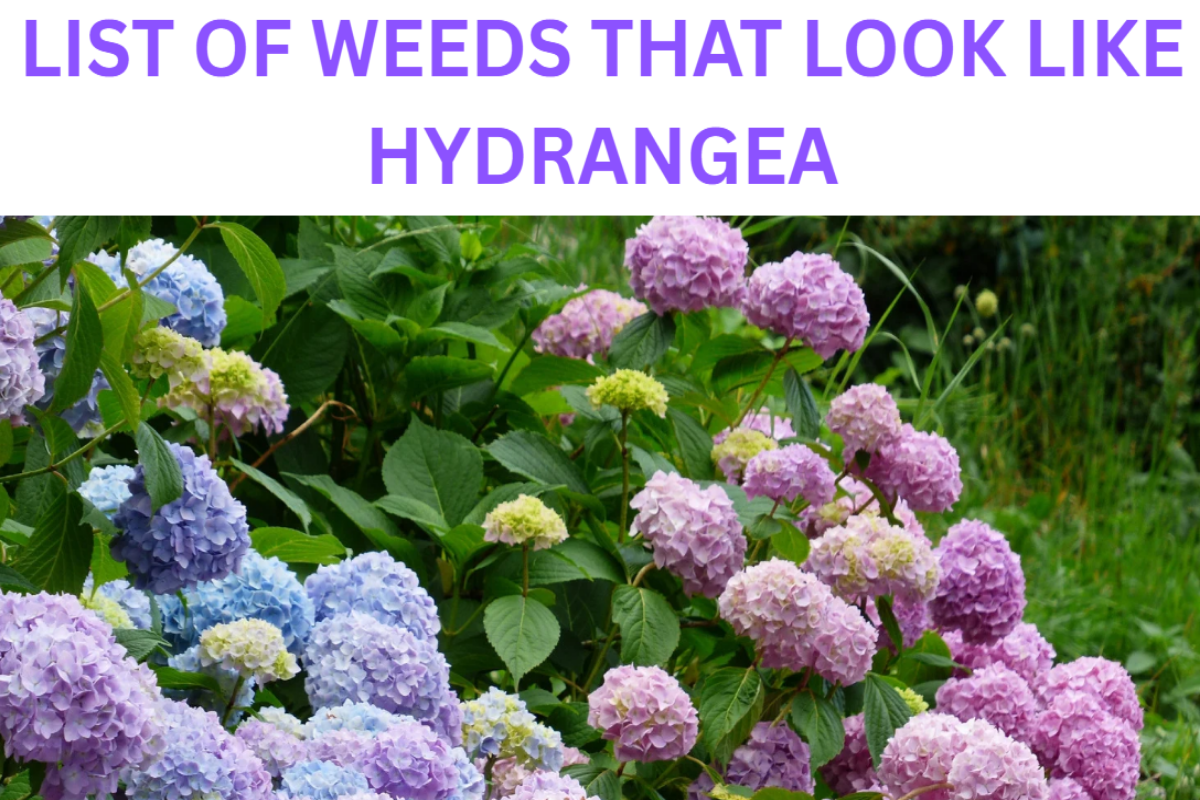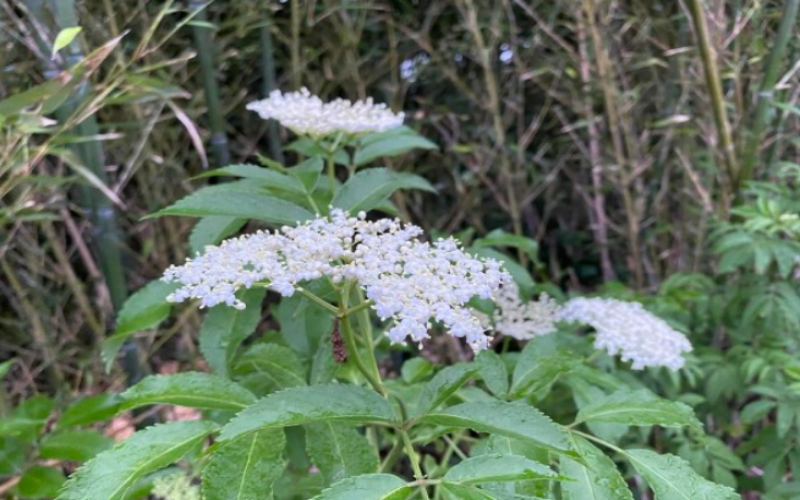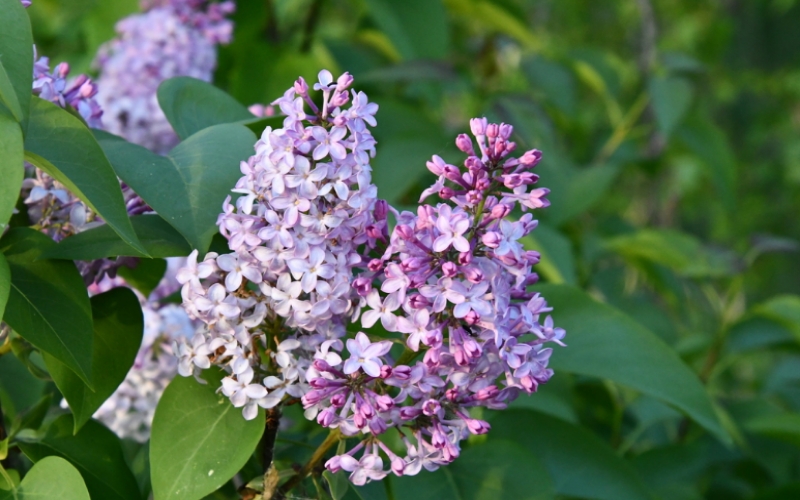Hydrangeas are a staple in many gardens because of their lush foliage and dramatic clusters of stunning blooms.

However, as much as you love the beautiful shrubs, you need to know that there are weeds that bear a striking resemblance to hydrangeas.
Misidentifying these lookalikes can crowd out your hydrangeas or leave you to nurture unwanted plants. Even worse, when they grow close together, you may remove your precious hydrangeas, mistaking them for weeds.
In this post, we’ll look at the common weeds that you can mistake for hydrangeas and how to differentiate them before they take over your garden.
1. American Elderberry (Sambucus canadensis)

American Elderberry is a deciduous shrub 5-12 feet tall. It produces flat-topped clusters of tiny white flowers, somewhat similar to hydrangeas such as the lacecap variety.
However, elderberry has flat-topped to round clusters, unlike the dome-shaped flower clusters of most hydrangeas. It also has compound leaves with serrated edges, while most hydrangeas have simple, serrated leaves.
2. Chinese Snowball Viburnum (Viburnum macrocephalum)

This viburnum variety can be mistaken for the mophead hydrangea (Hydrangea macrophylla), especially when you focus on its large, rounded flower clusters. The blooms are typically white and can be 3-8 inches wide. The two species also produce blooms that are generally unscented.
The distinguishing feature between the two plants comes down to height. Viburnum can grow up to 25 feet tall, while hydrangeas maintain a height of 10-15 feet.
3. Purple Rhododendron (Rhododendron catawbiense)

Rhododendron catawbiense bears pinkish-purple flowers that mimic the globular appearance of some hydrangea varieties, especially from a distance. It also offers a fuller, bushier appearance like hydrangeas, as it grows about 6-10 feet tall.
However, its blooms are more funnel-shaped, unlike the umbrella or star-shaped hydrangea flowers. Also, the Purple Rhododendron is an evergreen shrub, while the hydrangeas are deciduous.
4. Queen Anne’s Lace (Daucus carota)

Queen Anne’s Lace, also known as the Wild Carrot, has delicate, lacy white flower heads that resemble lacecap hydrangeas flat, airy appearance.
It is easy, however, to distinguish the two plants as the Daucus carota has trippinate lacy leaves that are distinct from the simple, toothed leaves of hydrangeas. Queen Anne’s Lace is generally a wild plant, mostly found on roadsides and fields, unlike cultivated garden hydrangeas.
5. Common Lilac (Syringa vulgaris)

Like hydrangeas, lilacs offer splendor in many colors. In peak bloom, they produce dense, conical to pyramidal flower clusters in purple, lavender, white, or pink that can resemble panicle hydrangeas.
That said, lilacs have distinct dark-green, heart-shaped leaves while hydrangeas have simple, stalked leaves with pinnate venation.

Lead Editor for Insight Weeds.